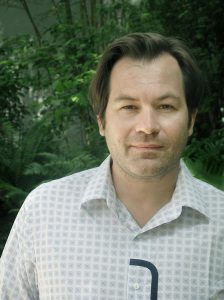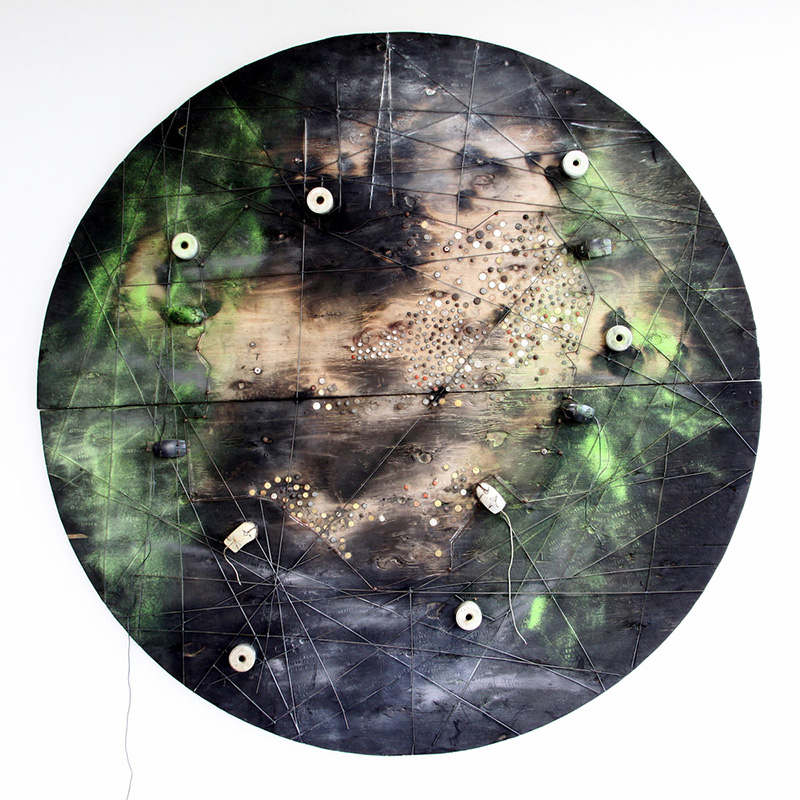INTERVIEW: Guillaume Piens
 Mr. Guillaume Piens, who took over as Artistic Director Art Paris Art Fair since 2011, few days before the opening of Art Paris Art Fair 2017 at the Grand Palais, talk to us for the selection of Guest of Honour, that in the 2017 edition of Art Paris is Africa, and explains how as Director of Paris Photo seven years ago he had already been involved in the development of Contemporary Art scene in Africa and had foreseen the booming, which in today has spread in Galleries, Museums, Institutions and a very interesting up-coming Art Market. In Art Paris Art Fair 2017 the visitor will discovers as he said “An emerging generation of talented artists from Africa and its diaspora born in the 70s and 80s. It is a generation that grew up with the Internet and had access to artist-in-residence programmes in Europe and the USA. These artists live and work in several different countries…”
Mr. Guillaume Piens, who took over as Artistic Director Art Paris Art Fair since 2011, few days before the opening of Art Paris Art Fair 2017 at the Grand Palais, talk to us for the selection of Guest of Honour, that in the 2017 edition of Art Paris is Africa, and explains how as Director of Paris Photo seven years ago he had already been involved in the development of Contemporary Art scene in Africa and had foreseen the booming, which in today has spread in Galleries, Museums, Institutions and a very interesting up-coming Art Market. In Art Paris Art Fair 2017 the visitor will discovers as he said “An emerging generation of talented artists from Africa and its diaspora born in the 70s and 80s. It is a generation that grew up with the Internet and had access to artist-in-residence programmes in Europe and the USA. These artists live and work in several different countries…”
By Efi Michalarou & Dimitris Lempesis
Photo: Guillaume Piens, © Marie Amar
Mr. Piens, this year Africa is guest of honour at Art Paris 2017. First of all, could you tell us what criteria you use when selecting a country or a region to be the fair’s guest of honour? And secondly, what is the cultural relationship between France and Africa?
Choosing which art scene to invite always comes down to a combination of instinct and knowledge. In 2010, when I was the director of Paris Photo, I was one of the first people to pay tribute to African art, however over the last 7 years there has been growing interest in contemporary African art from both institutions and the art market. This interest has gone hand-in-hand with the flourishing activity in Africa itself and the opening of a large number of galleries, art centres and museums (in particular in South Africa and Morocco), as well as the creation of foundations, art fairs and biennials. As for Paris, it was high time that a modern and contemporary art fair in Europe gave pride of place to Africa, especially at a time when the City of Light is playing host to an unheard of number of exhibitions on Africa: 100% Afrique at La Villette; ‘Le jour qui vient’ at the Galerie des Galeries; ‘L’Afrique des routes’ at the Quai Branly-Musée Jacques Chirac; not forgetting the upcoming exhibition at the Fondation Vuitton at the end of April. To answer the second part of your question, there is an important and longstanding relationship between Africa and France, mainly focusing on the countries of West Africa. Today, France is behind as far as contemporary African creation in non French-speaking countries is concerned and it needs to make up for lost time. Art Paris Art Fair’s project covers the whole of Africa, from north to south, and puts the spotlight on a young generation of artists from Mozambique, Angola, Zimbabwe, South Africa and Uganda. What will be a real revelation for many people is the discovery that African art is much more than just studio photography and recycled objects.
In your opinion, to what degree have French artists been influenced by the Africa in the past and what about today?
African art had a seminal influence on avant-garde movements in the 20th century. The list of artists is very long indeed, from Matisse to Picasso and from Modigliani to the German expressionists. African art continues to inspire contemporary artists today, for example Miguel Barcelo, who has spent a lot of time in Mali and Kader Attia who often travels to Dakar to produce his works.
We are used to seeing a few pieces by African artists in major events such as the Venice Biennale, but this one of the few times that a whole body of galleries and artists, from a continent that is synonymous with poverty, civil war and hardship, are on show at the same time. Do you believe that a contemporary African art scene is starting to take shape? And if so, how it is structured?
The art market in Africa has certainly taken off over the last 10 years. Johannesburg art fair, the continent’s oldest fair, has just celebrated its 9th edition. In addition to South Africa’s high profile art gallery scene, galleries are opening and developing in Lagos (Nigeria), Accra (Ghana), Nairobi (Kenya), Luanda (Angola) and Addis Ababa (Ethiopia). This activity is accompanied by the creation of private foundations and museums, for example the Sindika Dokolo foundation in Angola, Zeitz MOCAA (which will open in Cape Town in September 2017) and the Musée Mohammed VI d’Art Moderne et Contemporain in Rabat, to name but a few. There are also an impressive number of collectors, as well as people and organisations who support local creativity and African artists in general.
As we know, the centres of interest in contemporary art are shifting, for example last summer the Goodman Gallery in Johannesburg exhibited works by Shirin Neshat (20/84/9/16). Do you believe that Africa is becoming a new centre for contemporary art? Is Africa an up-and-coming art market?
You mentioned South Africa and it is true that it is the country that boasts the most contemporary art galleries, museums and private foundations. It is a regional hub, one which attracts artists from Zimbabwe and Nigeria. It is also a country in which the traumatism of apartheid fuels and inspires the work of many artists and writers. Nigeria, which has enjoyed rapid economic growth in recent years, is also an interesting case. Its film industry and ‘Nollywood’ studios have contributed to a booming culture of images made for Africans by Africans, one which has set itself free from the hegemony of western culture. Generally speaking the market for African art is still recent, but full of promise. There are some very highly rated artists today, such as Julie Mehretu, William Kentridge, Marlene Dumas and El Anatsui, who are represented by the major international galleries and whose works are in leading museums and private collectors all over the world. It’s a pretty safe bet that this proliferation of events on contemporary African creativity will lead to increased interest in the artists from this continent and recognition of their work.
At a time when Europe is confronted with problems such as the rise of radical right-wing parties, immigration and the massive movement of populations, terms like globalisation and multiculturalism take on a new meaning compared to in the past. Is this spotlight on Africa a way of taking a new look at, reinterpreting and redefining these terms?
The galleries that visitors will discover at Art Paris Art Fair principally lay the stress on the emerging generation of talented artists from Africa and its diaspora born in the 70s and 80s. It is a generation that grew up with the Internet and had access to artist-in-residence programmes in Europe and the USA. These artists live and work in several different countries and, as a consequence, their themes, which deal with dislocation, migration, identity and the sense of belonging, are in perfectly in tune with the questions our European societies have to address.
Info: Art Paris Art Fair 2016,Artistic Director: Guillaume Piens, Grand Palais, Avenue Winston Churchill, Paris, Days & Hours: Wed (29/3/17) 14:00-18:00 (Opening by invitation only) & 18:00-22:00 (Vernissage by invitation only), Thu (30/4/17) 11:30-20:00, Fri (31/4/17) 11:30-21:00, Sat (1/4/17) 11:30-20:00, Sun (2/4/17) 11:00-19:00, Catalogue: €20, Entrance fee: Adults and children over age 10: €25, Students and groups of 10 or more: €12, Free admission for children under age of 10, www.artparis.com
First Publication: www.dreamideamachine.com
© Interview – Efi Michalarou & Dimitris Lempesis





